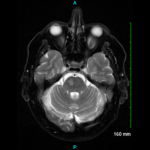 In 2021, the ACR—in concert with the Vasculitis Foundation (VF)—released four new vasculitis guidelines, one each on: 1) anti-neutrophil cytoplasmic antibody (ANCA) associated vasculitis, 2) giant cell arteritis (GCA) and Takayasu arteritis, 3) polyarteritis nodosa and 4) Kawasaki disease. The guideline development process is complex. For the vasculitis guidelines, this process kicked off in June 2017, when the core leadership team formed by the ACR first met in person. The ACR also convened expert and voting panels. Together, the core team and the two panels determined the project’s scope. Members of the literature review team assembled evidence using the most recent nomenclature system for vasculitis, the 2012 Chapel Hill Consensus Conference nomenclature.1 A panel of patients contributed as well. In this series, we discuss the updated recommendations with authors who contributed to each guideline. Read previous installments in this series.
In 2021, the ACR—in concert with the Vasculitis Foundation (VF)—released four new vasculitis guidelines, one each on: 1) anti-neutrophil cytoplasmic antibody (ANCA) associated vasculitis, 2) giant cell arteritis (GCA) and Takayasu arteritis, 3) polyarteritis nodosa and 4) Kawasaki disease. The guideline development process is complex. For the vasculitis guidelines, this process kicked off in June 2017, when the core leadership team formed by the ACR first met in person. The ACR also convened expert and voting panels. Together, the core team and the two panels determined the project’s scope. Members of the literature review team assembled evidence using the most recent nomenclature system for vasculitis, the 2012 Chapel Hill Consensus Conference nomenclature.1 A panel of patients contributed as well. In this series, we discuss the updated recommendations with authors who contributed to each guideline. Read previous installments in this series.
We continue our series with Mehrdad Maz, MD, an author of the ACR/VF guideline for GCA. Dr. Maz is a professor of medicine, director of the rheumatology fellowship training program, and chief of the Division of Allergy, Clinical Immunology, and Rheumatology at the University of Kansas Medical Center, Kansas City, Kans.
From the guideline—Recommendation: For patients with suspected GCA, we conditionally recommend temporal artery biopsy over temporal artery ultrasound for establishing a diagnosis of GCA.
Q: I believe some practical considerations led to a conditional recommendation for temporal biopsy over ultrasound. Why did the panel end up on that side of the debate?
Dr. Maz: The short answer is that this recommendation is not intended to discourage the use of ultrasound in the evaluation of patients with suspected GCA.2 Also, the objective of this guideline was to provide evidence-based recommendations and expert guidance in the U.S. Out of 22 recommendations for GCA, only one was a strong recommendation. The remainder were conditional, including the one to consider temporal artery biopsy over the use of ultrasound of the temporal artery for diagnosis of GCA.
It’s important to explain what we mean by a conditional vs. strong recommendation because it pertains to your question.
Strong recommendations are typically supported by moderate- or high-quality evidence, such as what you see in randomized controlled trials. A strong recommendation is one that would apply to all, or almost all, patients, and so only a small proportion of clinicians and patients would not want to follow the recommendation.
A conditional recommendation is supported by lower quality evidence. A conditional recommendation would apply to most patients, but the alternative is a reasonable consideration. As we go through these discussions, let’s keep these definitions in mind.
The guideline is intended for what’s practical and accessible at the present time in the U.S. As you know, the use of ultrasound for this purpose requires some skills, expertise and familiarity with this technique, which is currently not as widespread in the U.S. as in European countries. For this reason, we mention in the guideline that in centers where appropriate training and expertise exist, temporal artery ultrasound may be a useful and complementary tool for diagnosing GCA. We hope that as this diagnostic modality is used more often, radiologists and rheumatologists alike, in more centers develop the skills and expertise in using and interpreting ultrasound. The recommendations don’t preclude the use of ultrasound; we hope to start using it eventually.
From the guideline—Recommendation: For patients with newly diagnosed GCA, we conditionally recommend obtaining noninvasive vascular imaging to evaluate large vessel involvement.
Q: There is a conditional recommendation for obtaining noninvasive imaging for large vessel involvement, which I don’t think people are doing routinely. Is this a recommendation for universal screening, and by what modality would you recommend it?
Dr. Maz: I think you’re right about the current prevalent practice. Outside of large academic centers, imaging of large vessels is not routinely considered. This is also a conditional recommendation. This idea is based on knowledge that large vessel involvement can be present with or without overt clinical manifestations. The implications of this are significant, especially for chronic management and monitoring of disease and its large vessel complications.
On the other hand, the guideline also states that in patients without large vessel involvement on initial screenings, it may or may not be necessary to perform routine or repeated monitoring with vascular imaging. Of course, it depends on clinical manifestations and symptoms while patients are followed longitudinally.
Large vessel imaging can also help with the diagnosis of GCA in the absence of cranial manifestations or in lieu of biopsy or when we are faced with a negative biopsy, but we are still concerned that patients have signs and symptoms of large vessel disease that require further evaluation, diagnosis and management.
As to what kind of modality to use, both magnetic resonance angiography (MRA) and computed tomography angiography (CTA) are readily available and can be used for this purpose. We’re not recommending conventional catheter-based angiogram for routine screening because it is more invasive, and MRA or CTA may provide the needed information.
From the guideline—Recommendation: For patients with newly diagnosed GCA, we conditionally recommend the use of oral glucocorticoids with tocilizumab over oral glucocorticoids alone.
Q: The guideline recommends tocilizumab up front. That reflects my practice and many others. Yet it differs from what EULAR recommends, which is to use only tocilizumab in high-risk situations.3 What do you think led to the difference?
Dr. Maz: Just a reminder that this is also a conditional recommendation, and alternative approaches are still acceptable. Tocilizumab is the only FDA [U.S. Food & Drug Administration] approved therapy for GCA. Interestingly, even glucocorticoids, including prednisone, are not approved for GCA, but we’re quite aware of their efficacy for GCA.
The use of tocilizumab early on is based on data from GiACTA, which showed that tocilizumab has a significant steroid-sparing effect in GCA.4 It’s conditionally recommended for initial treatment to potentially reduce side effects of chronic glucocorticoid therapy. However, methotrexate with prednisone or prednisone alone can be used for newly diagnosed patients. The decision to treat with tocilizumab and glucocorticoids, methotrexate and glucocorticoids, or glucocorticoids alone as the initial therapy should be based on the physician’s experience, and the patient’s clinical condition, values, and preferences.
Also, cost may be a factor with tocilizumab. Its use is affected by other factors. For instance, patients with recurrent infections or diverticulitis may not be able to use this. So other options are valid and can be used.
From the guideline—Recommendation: For patients with GCA who have critical or flow-limiting involvement of the vertebral or carotid arteries, we conditionally recommend adding aspirin.
From the guideline—Recommendation: In patients with newly diagnosed GCA, we conditionally recommend against the use of a hydroxymethylglutaryl-coenzyme A reductase inhibitor (i.e., statin) specifically for the treatment of GCA.
Q: The guidelines gave a conditional recommendation against statins and in favor of aspirin for flow-limiting involvement. Why?
Dr. Maz: This recommendation was about whether statins could be used for the treatment of GCA. The guideline’s recommendations address whether they provide a significant therapeutic effect for GCA. The recommendation wasn’t to address if statins are useful for patients with risks for cardiovascular events, which is a different clinical question. We know aspirin may be beneficial in preventing ischemic events, but the efficacy of aspirin in preventing ischemic events without flow-limiting stenosis of the vertebral or carotid arteries is unclear.
Theoretically, it makes sense to reduce cardiovascular risk for the management of some patients using aspirin or statins, which is what we do for other patients with risk factors. Yet the available data didn’t show particular efficacy for those with this disease. Once again, being a conditional recommendation, this does not exclude their use based on the treating physician’s decision and individual patient’s clinical situation and risk factors.
Q: Regarding the duration of tocilizumab and glucocorticoids, there’s been a lot of interest in this with ANCA-associated vasculitis and lupus, but there’s been limited data. Was there any discussion on the duration of these?
Dr. Maz: There was a lot of discussion about it, but we had to look at the data behind answering this. I’m sure some readers of the guideline will have the same question and want to know about how to manage these patients. Because of a lack of long-term evidence on how long to treat these patients, the optimal duration is not determined. We were only able to present a position statement that the optimal duration of therapy is not well established and should be guided again by patient values and preferences. This was discussed among the patient panel, which emphasized minimizing the use of glucocorticoids. They recognized that relapses occurred, and patients may need to be treated longer. The physicians had a similar thought process.
Regarding the length of therapy for tocilizumab, lack of long-term follow up for tocilizumab at the time of the literature review for this guideline development influenced the decision. The first part of the GiACTA study reported the effect of tocilizumab for 12 months, but the second part extended the data for three years, with favorable responses seen in these patients.
Although we couldn’t really outline length of therapy, we did mention that in patients with GCA who are in apparent clinical remission, we strongly recommended long-term clinical monitoring over no monitoring at all, which was the only strong recommendation in this guideline given the minimal risks and potential catastrophic outcomes if patients are not monitored.
The important point to emphasize here is that the goal and the vision of the ACR for this guideline are similar to other ACR guidelines. The ACR/VF vasculitis management guideline will be updated periodically to provide a timely recommendation based on new data or new therapies as they become available.
 Michael Putman, MD (@EBRheum), is an assistant professor at the Medical College of Wisconsin, Wauwatosa, where he is the associate fellowship program director and the medical director of the vasculitis program.
Michael Putman, MD (@EBRheum), is an assistant professor at the Medical College of Wisconsin, Wauwatosa, where he is the associate fellowship program director and the medical director of the vasculitis program.
References
- Jennette JC. Overview of the 2012 revised International Chapel Hill Consensus Conference nomenclature of vasculitides. Clin Exp Nephrol. 2013 Oct;17(5):603–606.
- Maz M, Chung SA, Abril A, et al. 2021 American College of Rheumatology/Vasculitis Foundation Guideline for the Management of Giant Cell Arteritis and Takayasu Arteritis. Arthritis Rheumatol. 2021 Aug;73(8):1349–1365; and Arthritis Care Res (Hoboken). 2021 Aug;73(8):1071–1087.
- Hellmich B, Agueda A, Monti S, Buttgereit F, de Boysson H, Brouwer E, et al. 2018 Update of the EULAR recommendations for the management of large vessel vasculitis. Ann Rheum Dis. 2020;79(1):19–30.
- Stone JH, Tuckwell K, Dimonaco S, Klearman M, Aringer M, Blockmans D, et al. Trial of tocilizumab in giant-cell arteritis. New Eng J Med. 2017 Jul;377(4):317–328.


